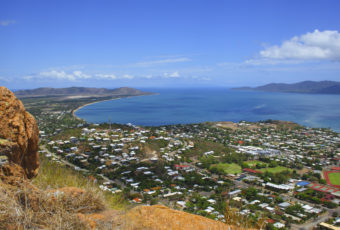Monash researchers say small isolated populations pose a threat to new dolphin species
Victoria’s iconic new dolphin species, the Burrunan dolphin, is at risk due to its small and isolated populations, according to the first study investigating the dolphin’s population using DNA.
Researchers from Monash University and the Australian Marine Mammal Conservation Foundation (AMMCF) have been investigating the population genetic structure of the Burrunan from the two only known resident populations—Port Phillip Bay and the Gippsland Lakes, as well as from across coastal Victoria and Tasmania.

In 2011 Dr Kate Charlton-Robb, from the Monash School of Biological Sciences and AMMCF’s principal researcher, discovered the dolphins were a new species.
Dr Charlton-Robb said the new research published in Conservation Genetics found the Port Phillip Bay and Gippsland Lakes population were genetically very distinct and showed little genetic mixing.
“We had hypothesised that the Port Phillip and Gippsland Lakes dolphins would be more similar than the Tasmanian population, given the potential barrier of Bass Strait, but what we found was quite unexpected,” Dr Charlton-Robb said.
“The results suggest the Gippsland Lakes dolphins showed more genetic similarity to those in Tasmania, whilst the Port Phillip population was more isolated.”
Based on the dolphin’s DNA, the effective population size—those that are contributing genes into the next generation—is estimated to be less than 100 dolphins in each region.
“This is concerning, conservation action is required to protect the species. The very small population size, lack of genetic diversity, the isolation of these populations and the effects that could have on the future of not only these resident populations, but on the entire species.”
Dr Charlton-Robb identified the dolphins as a separate species and named them in 2011, her efforts have already seen the dolphin listed as threatened under Victoria Flora and Fauna Guarantee Act.
“For a species that lives so close to a major capital city like Melbourne, we still know very little about them.
“It is crucial we understand more about this unique population and about the species as a whole. Applied research with real conservation and protection outcomes is my mission,” she said.
Monash University School of Biological Sciences
Biological sciences is the broad term given to all the areas of study that have biology as their base subject. Biology is the study of life processes and living organisms. It is concerned with microbes, plants and animals, and involves study of their structure, function, evolution, development and ecology.
The scale of study ranges from genetics, the study of genes and the ways they control the development of plants and animals, including humans, to ecology, an area of biology dealing with the relationships of organisms to the environment and biosphere.
The Monash School of Biological Sciences is playing a lead role in this century of biology. Monash University’s work in vector-borne disease means illnesses like Dengue Fever may soon be a thing of the past. World-class research in ecology and genomics is helping to solve environmental challenges such as those associated with climate change, biological invasions, and large-scale changes to the environment, from arid areas to urban settings.
*

































Ask A Question
Ask us about your program of interest, or if you have a question about our services.
CONTACT US TODAY